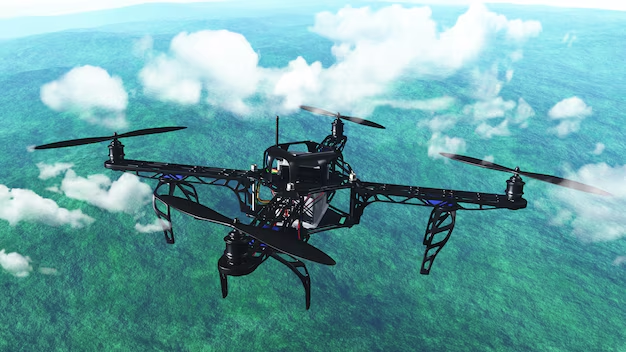Modern aviation relies on seamless and reliable communication systems to ensure safe and efficient aircraft operations. As the complexity of avionics systems grows, standardized protocols play a crucial role in maintaining structured data exchange between different onboard and ground-based systems.
One such critical standard is ARINC 729, which defines a communication protocol specifically designed for data link systems in aircraft. Developed to facilitate real-time communication, ARINC 729 enhances aircraft messaging, supports automation, and enables improved coordination between avionics subsystems.
In this blog, we will explore the fundamentals of ARINC 729, its role in avionics communication, key features, advantages, challenges, and its relevance in modern aviation technology. Whether you are an avionics engineer, aviation enthusiast, or someone looking to understand how aircraft communication works, this deep dive into ARINC 729 will provide valuable insights.

What is ARINC 729?
ARINC 729 is an aviation communication protocol specifically designed for airborne data link systems. It defines the standards for digital communication between aircraft systems and ground-based stations, ensuring reliable and structured data exchange.
Background and Purpose
ARINC (Aeronautical Radio, Inc.) develops standards for avionics communication, and ARINC 729 was introduced to address the need for a standardized protocol for Controller-Pilot Data Link Communications (CPDLC) and Aircraft Communications Addressing and Reporting System (ACARS). These systems allow pilots and air traffic controllers to exchange crucial flight information digitally, reducing reliance on traditional voice communication.
Key Objectives of ARINC 729
- Establish a structured messaging system for flight operations
- Ensure secure and error-free data transmission
- Improve real-time communication between pilots, air traffic control (ATC), and airline operations centers
- Enhance situational awareness and automation in flight management
Where is ARINC 729 Used?
- Commercial aviation: Enables efficient communication between aircraft and ground control
- Military aviation: Supports secure data exchange in mission-critical operations
- Business jets: Ensures streamlined operations for private aircraft
- Air traffic management systems: Facilitates automated messaging for improved airspace management
By standardizing data transmission, ARINC 729 helps modern aircraft operate more efficiently, reduces pilot workload, and enhances flight safety.
Key Features of ARINC 729
ARINC 729 plays a crucial role in avionics communication by providing a structured and reliable data link system. Here are its key features:
1. Structured Message Format
- Uses a standardized message format to ensure compatibility across different aircraft and ground systems.
- Supports predefined message types for flight operations, air traffic control (ATC), and airline dispatch communications.
2. Real-Time Digital Communication
- Enables Controller-Pilot Data Link Communications (CPDLC) for efficient pilot-ATC interactions.
- Reduces reliance on traditional voice communication, minimizing miscommunication risks.
3. High Reliability and Error Detection
- Incorporates error-checking mechanisms to ensure accurate data transmission.
- Uses redundancy and validation techniques to detect and correct errors in communication.
4. Compatibility with Other Avionics Standards
- Works alongside ARINC 429, ARINC 619, and ARINC 620 for seamless integration in avionics networks.
- Supports ACARS (Aircraft Communications Addressing and Reporting System) for airline operational messaging.
5. Efficient Data Link Management
- Optimized for airborne communication networks, reducing data transmission delays.
- Supports prioritization of critical messages, ensuring that urgent data is processed first.
6. Secure Data Transmission
- Implements encryption and authentication methods to prevent unauthorized access.
- Ensures confidentiality of flight operations data, improving aviation security.
7. Scalability for Future Aviation Needs
- Designed to support expanding air traffic communication demands.
- Can be upgraded to accommodate future NextGen air traffic management systems.
How ARINC 729 Works in Avionics Systems
ARINC 729 is a specialized data link communication protocol used in avionics systems to facilitate secure and structured messaging between aircraft and ground stations. It plays a vital role in ensuring seamless real-time communication between pilots, air traffic control (ATC), and airline operations.
1. Data Link Communication in Aviation
Aircraft communication has traditionally relied on voice-based radio communication, which is prone to misinterpretation and congestion. ARINC 729 enhances digital messaging, allowing automatic and precise exchange of information. It is primarily used in:
- Controller-Pilot Data Link Communications (CPDLC) for digital pilot-ATC communication
- Aircraft Communications Addressing and Reporting System (ACARS) for operational and maintenance messages
- Flight Management Systems (FMS) for automated flight data exchange
2. Components of ARINC 729 Communication
The protocol interacts with multiple avionics subsystems to ensure accurate and efficient communication:
a) Message Generation and Transmission
- Pilots or onboard systems generate a message (e.g., a weather request or clearance update).
- The ARINC 729 data link processor formats the message according to standardized protocol rules.
- The message is transmitted via VHF, HF, or satellite links based on availability and routing preferences.
b) Airborne System Integration
- ARINC 729 interfaces with Flight Management Systems (FMS), Flight Data Recorders (FDR), and Aircraft Condition Monitoring Systems (ACMS).
- Ensures seamless integration with other ARINC standards like ARINC 429 (digital data bus) and ARINC 664 (Ethernet-based networking).
c) Ground-Based Processing
- Once received by ground stations, the message is routed to ATC, airline operation centers, or maintenance teams.
- Responses or flight clearance updates are sent back to the aircraft using the same secure protocol.
3. Key Applications of ARINC 729 in Avionics
a) Air Traffic Control (ATC) Communication
Enables Controller-Pilot Data Link Communications (CPDLC) for non-verbal ATC instructions. Reduces voice channel congestion and minimizes miscommunication risks.

b) Operational Messaging
Supports ACARS to transmit airline operational data such as fuel usage, flight status, and passenger details. Helps airlines optimize logistics, improve turnaround times, and enhance efficiency.

c) Aircraft Health Monitoring
Enables real-time aircraft condition monitoring by transmitting maintenance alerts and fault reports. Improves predictive maintenance and enhances aircraft safety and reliability.

4. Advantages of ARINC 729 in Avionics Systems
- Increases operational efficiency by automating communication tasks
- Reduces pilot workload through structured digital messaging
- Enhances safety by minimizing misinterpretations in critical instructions
- Supports global air traffic management (ATM) with seamless connectivity
By ensuring reliable, secure, and standardized data link communication, ARINC 729 plays a critical role in modernizing avionics and improving flight operations worldwide.
Advantages of ARINC 729
ARINC 729 offers several advantages that enhance aviation communication, safety, and operational efficiency. Below are its key benefits:
1. Improved Communication Reliability
- Minimizes miscommunication: By replacing voice-based communication with digital messaging, ARINC 729 eliminates errors caused by accent, background noise, or misinterpretation.
- Structured data exchange: Ensures that messages follow a predefined format, reducing ambiguity in instructions between pilots and air traffic control (ATC).
2. Enhanced Flight Safety
- Reduces pilot workload: Automates communication tasks, allowing pilots to focus on flight management.
- Error detection and correction: Built-in mechanisms help identify and correct transmission errors, ensuring accurate message delivery.
- Seamless integration with avionics: Works alongside Flight Management Systems (FMS), ACARS, and other avionics protocols, ensuring real-time access to critical data.
3. Increased Efficiency in Air Traffic Management (ATM)
- Supports Controller-Pilot Data Link Communications (CPDLC): Reduces congestion in voice radio channels, allowing ATC to manage more aircraft with fewer delays.
- Faster response times: Messages are transmitted and processed more efficiently, leading to quicker flight clearances and adjustments.
- Automated routing and prioritization: Ensures that urgent messages (such as weather warnings or flight diversions) are processed first.
4. Secure and Encrypted Data Transmission
- Prevents unauthorized access: Encryption mechanisms protect sensitive flight data, ATC messages, and operational reports.
- Ensures confidentiality: Only authorized systems can access transmitted messages, enhancing aviation cybersecurity.
5. Cost-Effective and Scalable for Future Aviation Needs
- Reduces operational costs: By automating and digitizing communication, airlines save on radio bandwidth costs and operational inefficiencies.
- Future-proof design: Compatible with evolving NextGen air traffic management systems, ensuring long-term usability.
- Flexible implementation: This can be integrated into existing and upcoming aircraft models, making it a scalable solution.
Conclusion
ARINC 729 plays a crucial role in modern aviation by providing a structured, secure, and efficient data link communication system. By enabling real-time digital messaging between pilots, air traffic controllers, and airline operations, it reduces reliance on voice communication, minimizes errors, and enhances overall flight safety. Its integration with avionics systems like CPDLC, ACARS, and FMS ensures seamless data exchange, improving operational efficiency and reducing pilot workload.
As aviation technology continues to evolve, ARINC 729 remains a reliable and scalable solution for air traffic management. Its ability to support future advancements in NextGen ATM systems and secure communication networks makes it an indispensable protocol for airlines, aircraft manufacturers, and aviation authorities. By streamlining airborne communication and enhancing automation, ARINC 729 contributes significantly to the modernization and safety of global aviation.







